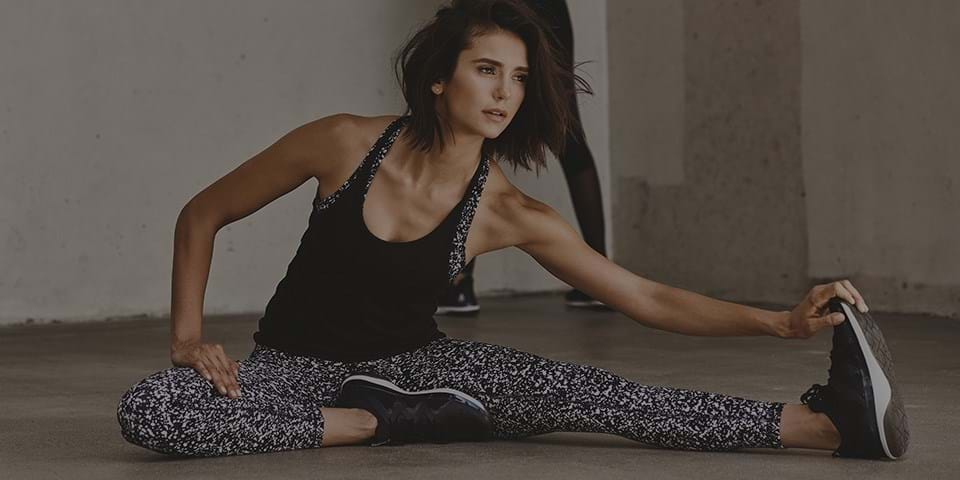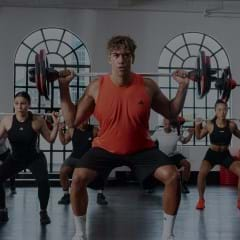You’re an expert in high-performance strength and conditioning, a master fitness instructor and an ex athlete yourself. Tell us how you’re now helping other athletes?
When I was an athlete competing in Kyokushin Kai karate it was the injuries I suffered that got me thinking about what was going wrong with my training. That’s what made me want to head into strength and conditioning coaching.
Now I’m all about ensuring durability for the athletes. We work a lot on strength and mobility, because for martial arts athletes that’s what’s really important. There’s a real focus on how you place the body – it’s all about thoracic mobility, hip mobility, and the ankle mobility which is key to correct hip extension. For strength training we work a lot with the barbell and do a lot of kettlebell training. Kettlebells are good for balance and reducing any competition within the body so it works more efficiently. Reducing imbalance also leads to less injury.
Injury prevention is really important, because when you have less injury you can train more, and that means you have more chance to win. Of course, avoiding injury is not just about winning. It means you have more chance to enjoy your activity, and not just for the short term, but for 15 or 20 years – for a lifetime.
But surely, particularly when you’re working with fighters, there’s still a fair bit of injury. What’s the best way to deal with injury and the disappointment that goes with it?
Injury can be the worst thing for any athlete! When you love sports but you can’t train it’s terrible and all you can think about is all the improvements you’re going to lose. But injury is your body trying to tell you something, and you need to listen to it. Consider this, your body is like a car, and when your car is making a noise you have to stop, look at what happened, make some changes and then try to go again. Mentally it’s really difficult to deal with, but you have to see it like an opportunity to understand why you have this injury and what you need to change.
Obviously injury is not a good thing, but sometimes it helps people to understand how they can train better and find a good balance – you know, some flexibility sessions, some strength work and some body composition changing high-intensity interval training (HIIT).
So for athletes a balanced training regime is key, is it the same for everyday exercisers?
Today we are seeing a lot of people doing too much HIIT. When you’re doing HIIT all of the time you live in a bath of lactic acid, which is not good as our bodies are not made to deal with that. Even athletes are not always training at such high intensities – and if they are, and they become injured, then the recovery is not too bad as they have massages every day. But for normal people who are dealing with everyday stress – work, kids, relationships and the like – it’s not easy to take time out and focus on a good recovery. That’s why it’s so important for regular exercisers to find a real balance, some days might be high-intensity, some days more relaxing.
So, what’s the top thing you’ve learnt from high performance sports training that can be applied by the everyday exerciser?
Don’t go overboard. Sometimes in sports the attitude is “If I could do more I would be better” but that’s not always the most efficient way to train. It’s the same for exercisers in a fitness club. I know there are some who think that doing three hours of classes is the best way to get results. In fact it’s not like that. You need to balance correctly your strength and conditioning activity with recovery.
Is recovery just taking time out? How do you work with athletes to enhance recovery?
First of all, learning to breathe correctly is key, you know, proper diaphragmatic belly breathing. This is fundamental to martial arts (and yoga). With these things that have existed for more than 2000 years there’s a real focus on breathing and using breathing to ensure quality of movement – not quantity.
Recovery also involves working on mobility. For wrestlers this means focusing on the ankles, the hips, the thoracic and the wrists – it’s really important to have good mobility in the wrist to avoid problems in the shoulder. Without good mobility your joints suffer.
High performance athletes have the advantage of their coach’s guidance, but for us everyday exercisers who want to challenge our bodies – how can we do this without overdoing it?
Giving your body adequate recovery, eating correctly, sleeping … all of these things are really important for being able to give your best every day but not smash yourself.
When it comes to strength training I suggest you don’t go into bodybuilder training mode and spend one day working the chest, one day working the back. Too much volume just for one muscle is not really good for your coordination, so the best is to work all your body in maybe two sessions a week. And, don’t think about specific muscles, but more about movement. This is where programs like BODYPUMP are ideal, as you get a real balance of strength training.
I suspect that most athletes are highly motivated, but for the rest of us finding the motivation to stick with training can a challenge, where do you think the best motivation comes from?
We often speak about exercise needing to be fun, but I think the biggest motivator is making improvements. If you make any improvement, it could be just adding a little more weight to your bar or losing some weight from your stomach, that’s what creates the fun and enjoyment. That feeling of improving your body is really motivating, and it can change your attitude too, it makes you feel stronger. When you experience these improvements it makes you trust the process – and that’s what makes you want to keep going.

Thomas Cerboneschi is French fitness professional and Olympic Federation consultant who provides general physical preparation coaching for high performance athletes. He is also a Les Mills Master Trainer, who travels the world educating and inspiring group fitness instructors.






